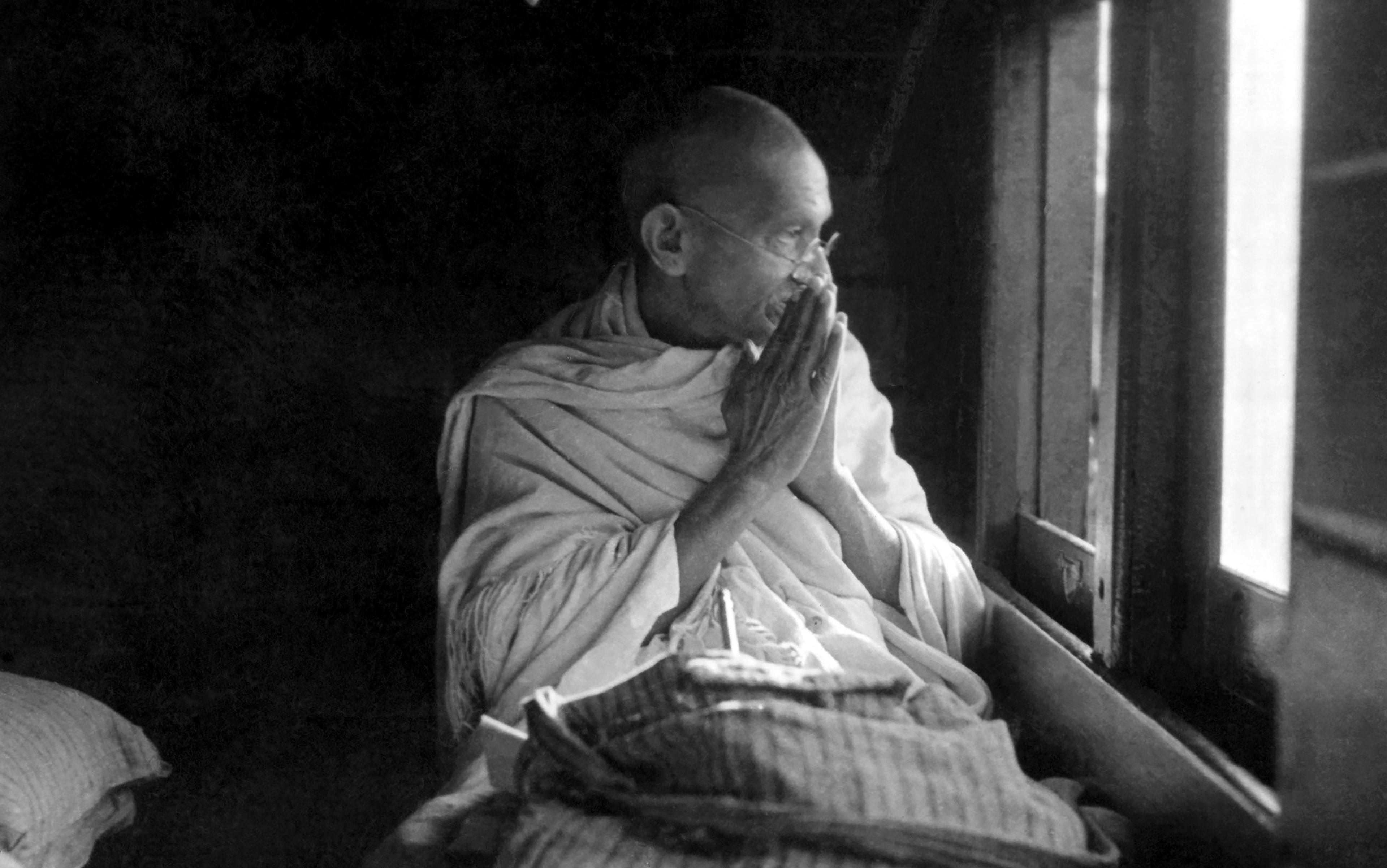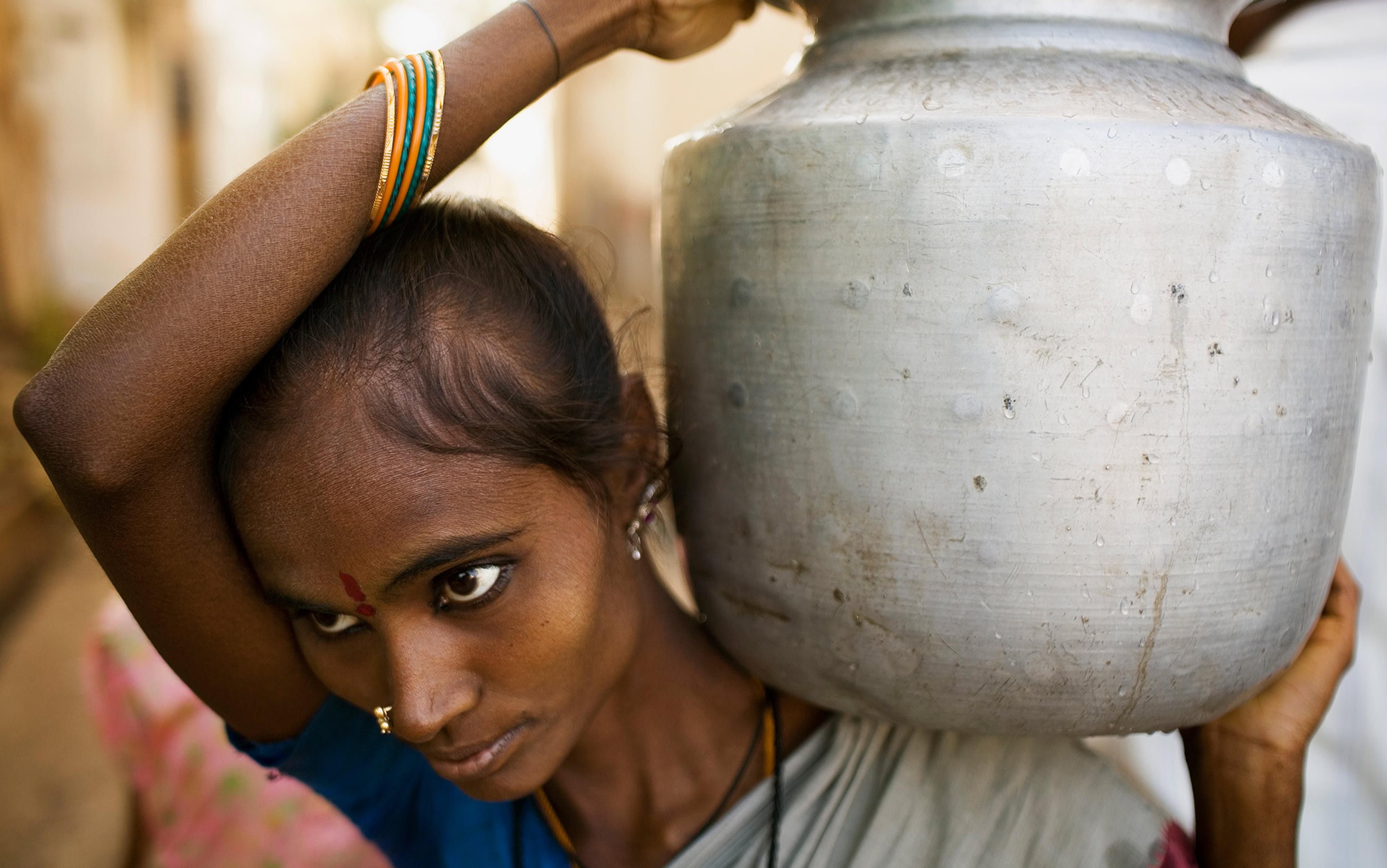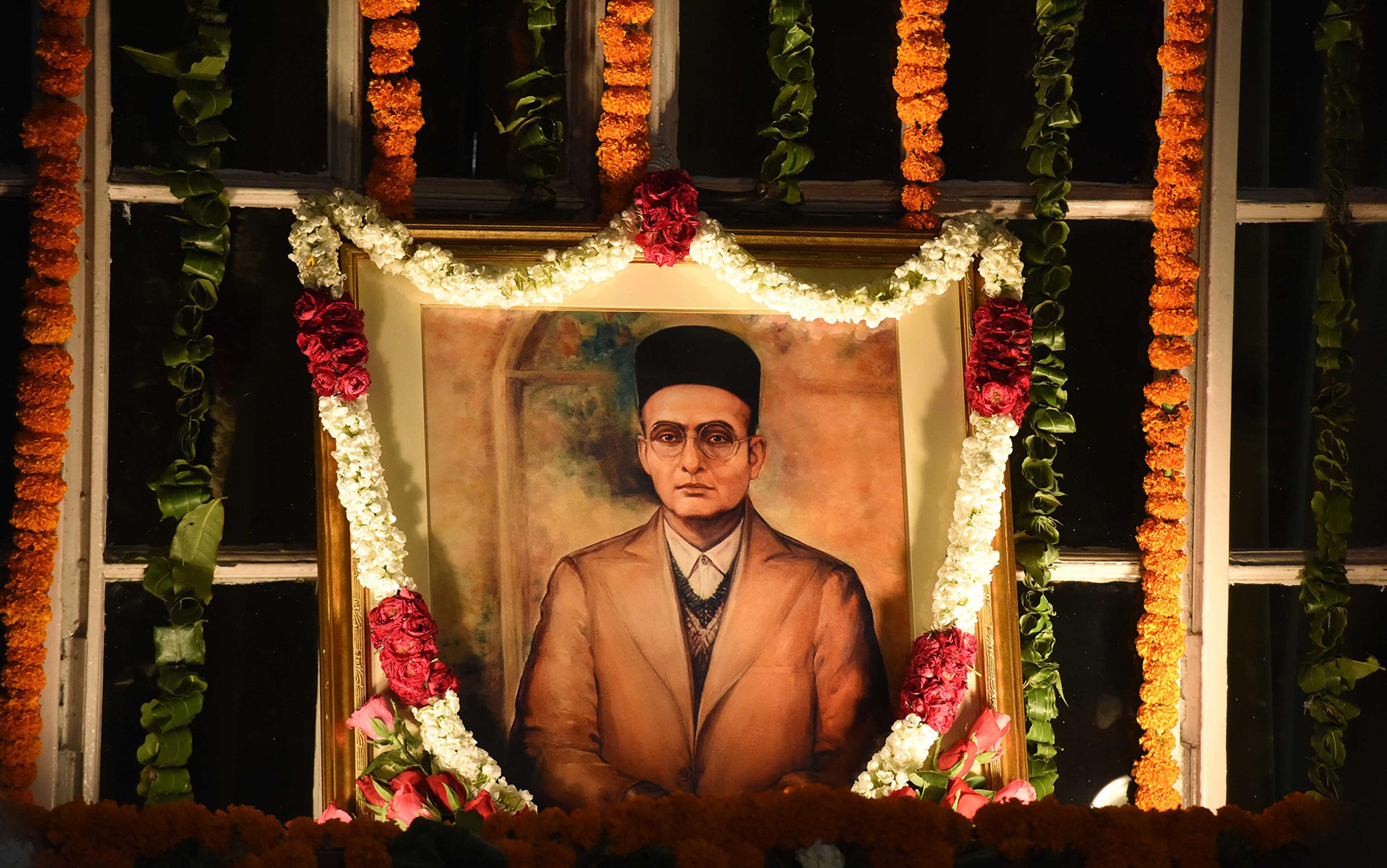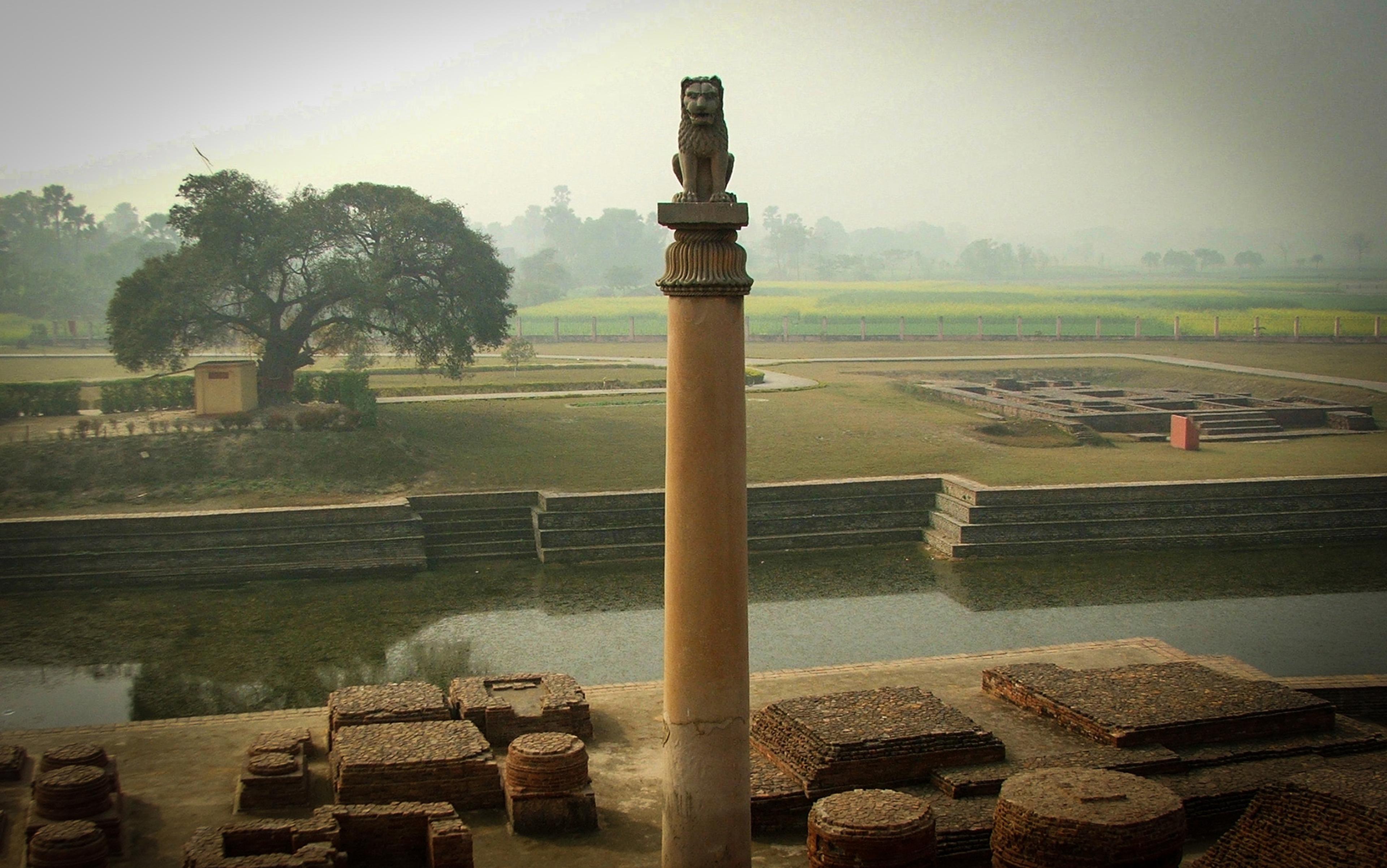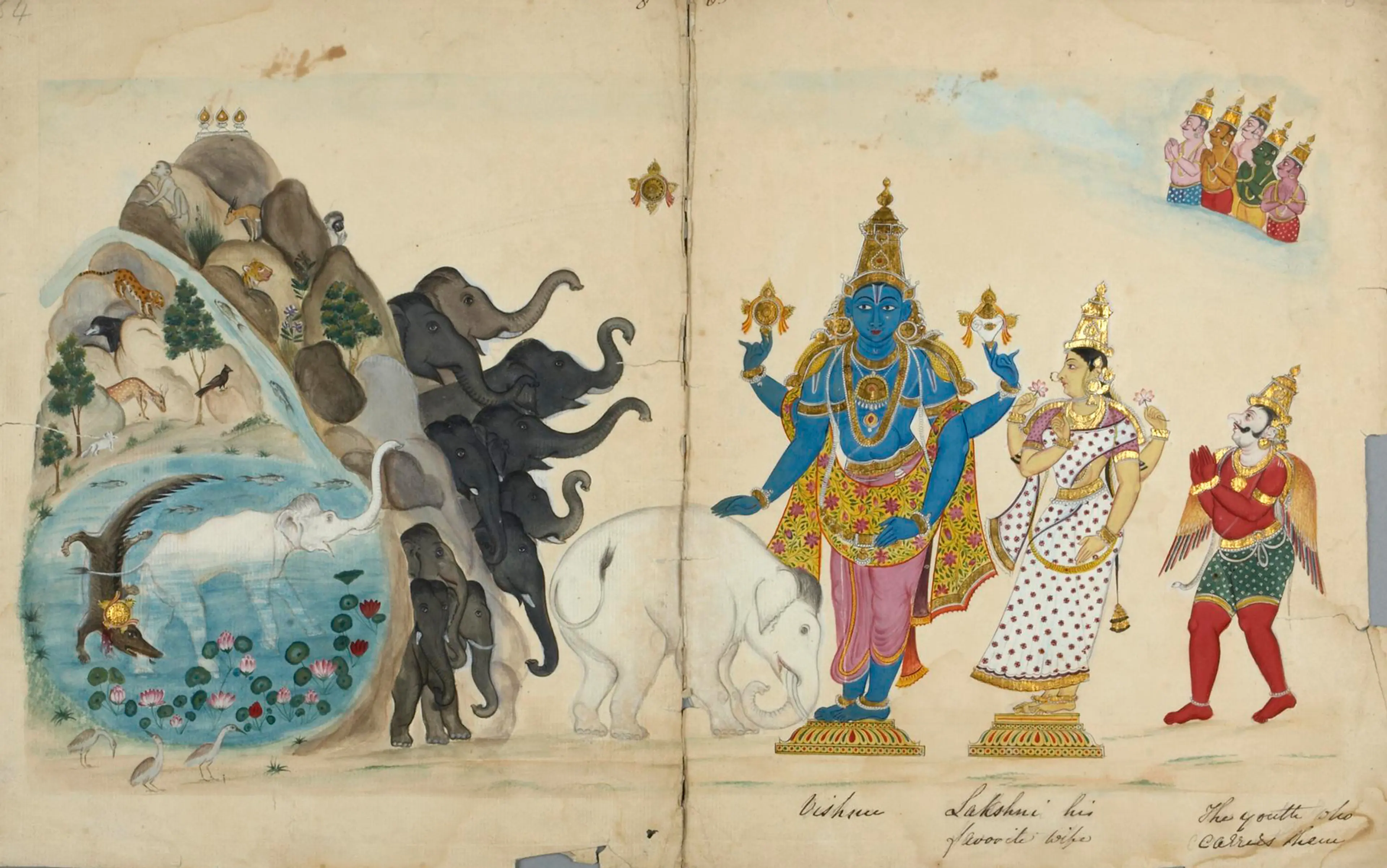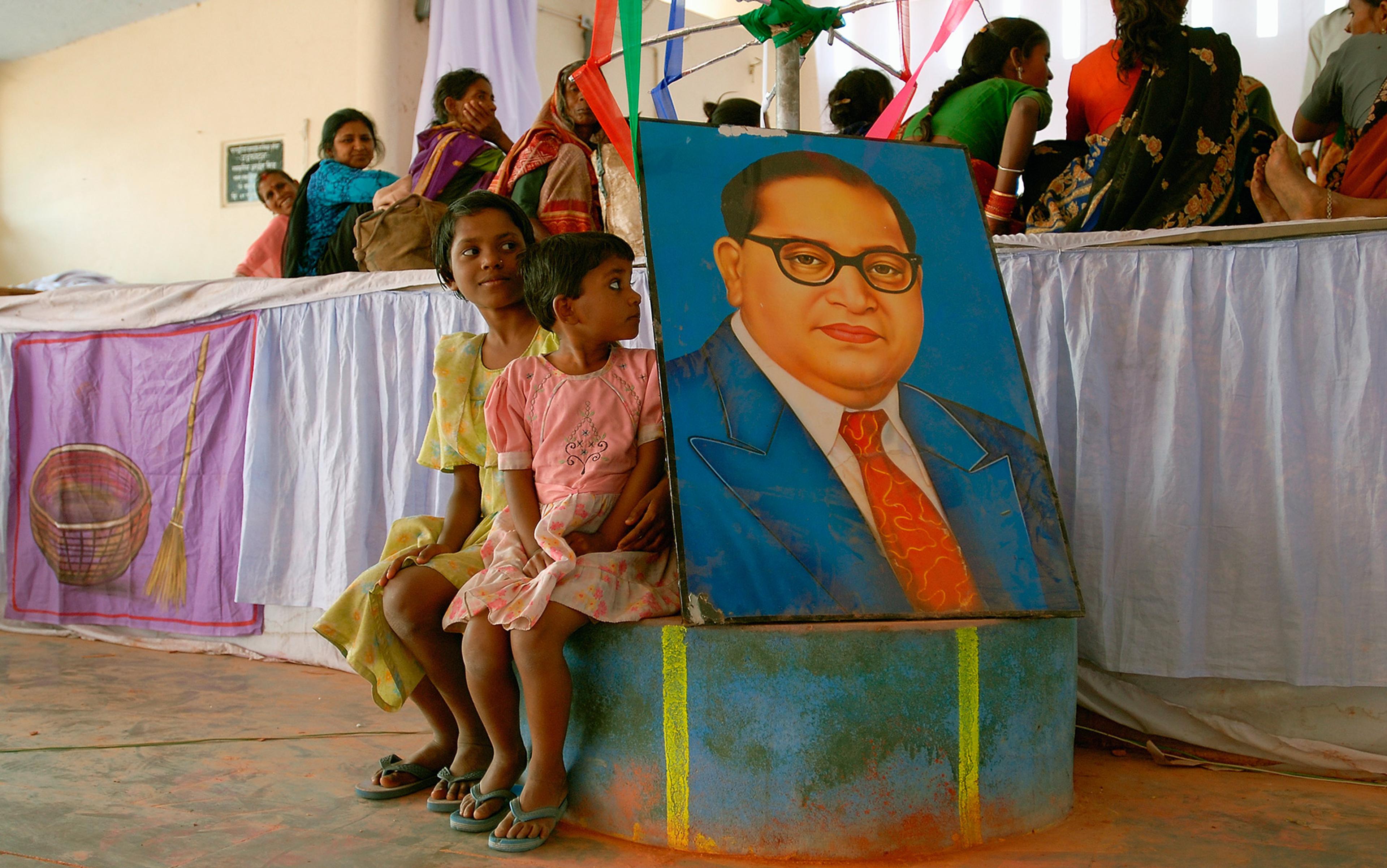Political theorists often argue that citizens need to have certain capabilities for their political projects to be successful. Ancient and medieval political theorists, like Plato or Aquinas, often demand that people receive advanced spiritual and civic education as a prerequisite for participating in rule. This training is intricate. It takes time, and it can be expensive. Pre-industrial economic systems do not generate a very big surplus. In highly stratified ancient republics, citizenship was often reserved for the rich and powerful.
Modern liberals, like Adam Smith or Benjamin Constant, tend to take a different approach – they argue that most people already have the qualities that are necessary for citizenship. If they don’t have them, they can gain them by participating in markets and in civil society organisations, without need for careful planning. It helps that modern liberals envision a more limited role for their citizens – they need enough civic education to be able to vote for representatives, but they are not expected to make important everyday political decisions.
Gandhi was a different sort of thinker. He wanted ordinary people to make difficult moral and political judgments themselves. Instead of lowering the bar for citizenship or excluding the poor and the weak from citizenship, Gandhi argues that it is possible to dramatically improve the capabilities of ordinary people.
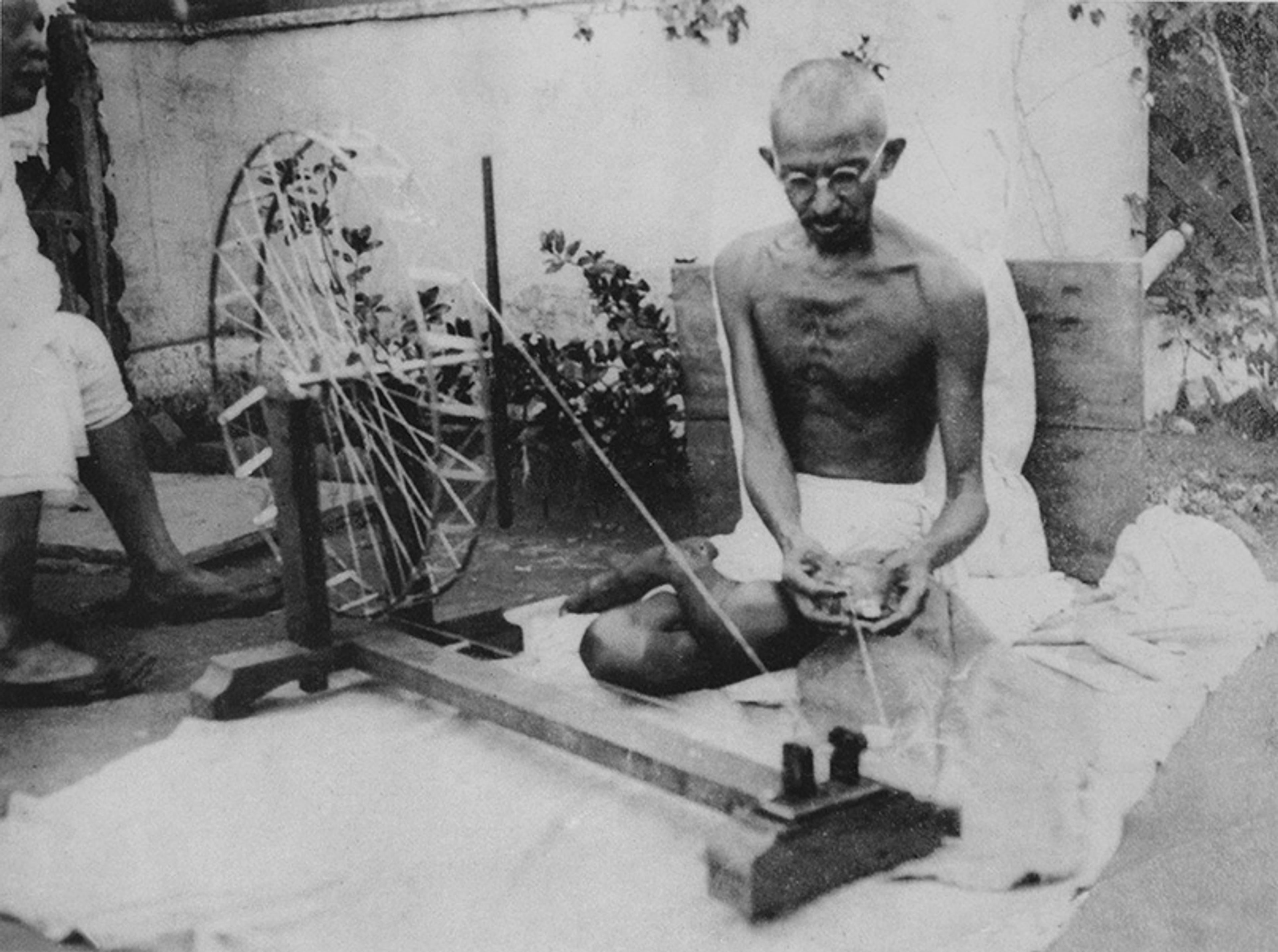
Gandhi spinning yarn in the late 1940s. Photo Wikipedia
To do this, he called for the reconstruction of the varna system, in which young people adopt the professions of their parents. In its original form, the system consists of four varnas. There are the Brahmins, who serve as scholars, priests or teachers. There are the Kshatriyas, who serve as rulers, administrators or warriors. There are the Vaishyas, who serve as farmers or merchants. Finally, there are the Shudras, who serve as artisans, labourers or servants. The members of all four varnas are householders, in the sense that it is permissible for people occupying any of the four varnas to produce children. One’s varna is determined by one’s parents’ varna.
The varnas are often ranked so that the Brahmins enjoy the highest status, followed by the Kshatriyas, the Vaishyas and the Shudras. But Gandhi rejected ranking the varnas in this way. For him, the varna system becomes a caste system when the varnas become hierarchical status markers. In his view, all four varnas are meant to be equal, and people in all four varnas are meant to be able to engage in spiritual development – not just the Brahmins.
There are some Indians outside the varna system. The Dalits – or untouchables – are considered to be without a varna. For Gandhi, the category of Dalit is itself an offence against the varna system, insofar as it is a category that presupposes a hierarchical ranking and excludes some people from spiritual realisation. There are also some Indians who are not householders, but have instead committed themselves to ascetic lifestyles. After some number of lifetimes at the householder level, a Hindu practitioner is said to advance into a new ashrama or stage of life. While Brahmins serve as spiritual teachers, they remain householders, and so have not yet transitioned to asceticism. A person who wishes to become an ascetic must not have any dependents. This does not necessarily mean that the ascetic can never have had a spouse or children, provided that when the ascetic embraces asceticism, appropriate provisions have been made. Once asceticism is embraced, commitments to celibacy and childlessness necessarily follow, lest any new dependents be acquired. Taken together, the whole varna system is called varnashrama, referring together both to the four kinds of householders and the four stages of life.
He believed the system could and should raise everyone to the same level of spiritual and political education
Why would Gandhi wish to revive this system, a system that – by his own admission – develops very easily in an undemocratic direction, into a system of hierarchical caste? When childhood is about preparing to compete in the job market and adulthood is consumed with worry about money, there’s no time for spiritual growth. But if children learn how to make a living at home, from their parents, Gandhi argues, they ‘need not even go to a school to learn it’. This leaves the mind ‘free for spiritual pursuits’. It allows the education system to focus on character development, on art and philosophy. By freeing Indians from the need to find their own way to earn a living, Gandhi hoped to give them the time necessary to become great souls.
Gandhi’s envisioned reform of the varna system faced obstacles. For one, the varna system and the caste system are often confused, even by Indians. Many people think that some professions are higher status than others. If profession is hereditary and different professions become associated with different levels of social status, this can result in a system of status hierarchy, in which some families occupy higher positions and others are subordinated. For Gandhi, caste hierarchy was a corruption of the varna system. Gandhi was a committed egalitarian – he believed the system could and should be used to raise everyone to the same level of spiritual and political education. However, caste perverted varna in the opposite direction, creating rigid, impenetrable social and political barriers between families.
The varna system was plagued by caste hierarchy, but that was just the beginning of its problems. By the early 20th century, many of the traditional professions were no longer performed. Gandhi, for instance, had given up the profession of his parents to become a lawyer. When he made the decision to go to England for a legal education, he was kicked out of Sabarmati Ashram. Jawaharlal Nehru, India’s first prime minister, was born a Brahmin. But Nehru took no interest in reading spiritual works. Instead, he went to law school.
Gandhi became convinced that it was a great evil for Indians to abandon the hereditary professions. Indians must not go to law school. If they do, this would give rise to a class of trained professionals, a group of bureaucrats, who would dominate India. These bureaucrats would run India the same way the British had run India, and under them ordinary Indians would remain incapable of participating in political decision-making.
In 1915, when Gandhi returned to India from South Africa, he argued that Indians who had adopted the Western professions – like law, medicine and engineering – should give them up. They should instead take up traditional Indian crafts. Gandhi himself gave up the law and took up the spinning wheel, making khadi – a kind of traditional Indian cloth. In the caste system, the manual crafts occupied the lowest position. High-caste Indians were prohibited from engaging in manual work on pain of expulsion from their caste. By encouraging Indians to take up the manual crafts, Gandhi subverted the caste system. But he also hoped to lay the groundwork for recovering varna.
If all Indians could learn the traditional crafts – and if all Indians consistently refrained from purchasing industrially produced goods – the crafts would ensure the livelihoods of all Indians. Future generations could simply learn the traditional crafts at home, from their parents, allowing them to pursue spiritual growth and participate directly in politics.
The manual crafts weren’t just a protest against the British but key to universal self-realisation in India
So, at first, the schools would need to teach the crafts – to ensure they were known to everyone, and to violate caste prohibitions on manual labour. But once the crafts were widely known and the caste prohibitions were no more, the crafts could be learned at home, and the schools could be turned to their true purpose – preparing young people to rule themselves. Gandhi called this self-rule ‘swaraj’.
Why the emphasis on crafts? For Gandhi, only the traditional crafts were universally available to Indians, even under British rule. Training Indians as farmers would not work as long as ownership of farmland remained concentrated. Indian farmworkers would be made to work long hours as agricultural labourers unless and until the land could be redistributed, and that could happen only after the departure of the British. Gandhi believed it was necessary to prepare for swaraj immediately, and the crafts presented themselves with practical and political appeal.
It would be possible to revive the crafts only if Indians made a point to exclusively purchase products made by traditional methods. For the crafts to survive in the long term, Indians would have to continue the anticolonial protest against manufactured goods even after independence. For Gandhi, the manual crafts weren’t just a protest against the British – they remained central to producing conditions for universal self-realisation in India.
As the Second World War drew to a close, Gandhi grew concerned that Indian independence would come too early, before this was properly grasped by the other independence leaders. His friend Nehru disagreed with him about the traditional crafts. In a letter to Nehru, Gandhi argued that by performing a ‘quota’ of manual labour, the people could ‘rest content’ with their ‘real needs’, freeing them up for spiritual learning. Nehru countered that traditional villages were ‘backward intellectually and culturally’, and that an economy based on primitive technology would be isolated and uncompetitive.
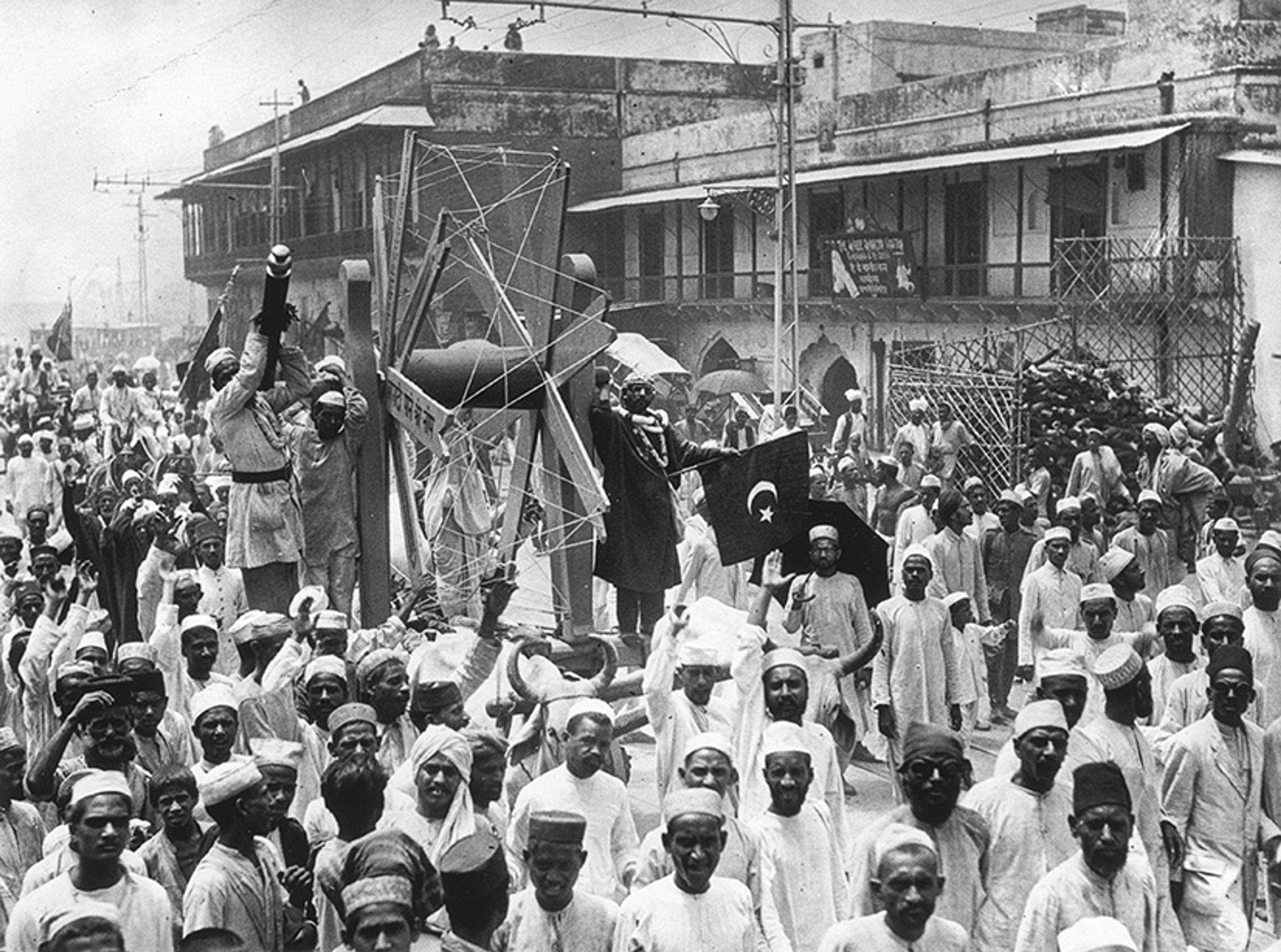
Gandhi Day paraders in Delhi, July 1922. Photo by Topical Press Agency/Getty
For Gandhi, Nehru had missed the point. As long as Indians could produce all the necessaries of life through the traditional crafts and they refrained from purchasing industrial goods, there was no need to make the economy competitive. What good is it to make the economy competitive, if that means that most people will have to spend all their time struggling to earn a living? What kind of life is that? How are people who live that way meant to find the time for politics and spirituality? Such a country would be riven with violence and exploitation. From Gandhi’s point of view, it would be hardly any different from British India.
After this exchange of letters in 1945, Gandhi became increasingly focused on preserving the traditional crafts, especially spinning cloth on the traditional spinning wheel. He emphasised the spinning wheel ever more heavily, so much so that, even to this day, the wheel lies at the centre of the Indian flag.
After the Second World War ended in 1945, independence was imminent. With very little time left to win the argument, Gandhi became suspicious of the other Indian independence leaders. In late 1945, Gandhi accused them of wanting ‘to destroy khadi’. In 1946, he emphasised that the introduction of the industrial spinning mill is so corrosive to his political project that if a ‘tyrant wants to destroy the spinning-wheel itself … we should ourselves perish with the spinning-wheel and not live to witness its destruction.’ He insists that spinning is the only way ‘to achieve swaraj for the poorest of the poor and the weakest of the weak’.
In Gandhi’s final years, he grew more and more focused on khadi. His writings in 1946 and 1947 refer to this cloth hundreds of times. He worries about uncertified khadi dealers, its commercialisation, the use of fabrics and materials to circumvent khadi rules. He argues that it is necessary to create a ‘yarn bank’ to ensure that khadi workers always have access to the materials. Spinning will work as a vehicle for swaraj only if the spinners understand the role it plays. He writes: ‘[I]f workers themselves lack faith then the claim for khadi will fall to the ground.’
The workers are to desist from adopting the mill because they know it is the thin end of the wedge, that to abandon the wheel for the mill is to start the process of colonialism all over again. If the workers do not understand that, then they will allow the wheel to be taken from them. Without the wheel, the varna system cannot be recovered, and any swaraj the workers obtain will be empty. In July 1946, a critic accuses Gandhi of forcing the villagers to spin. Gandhi replies that Indian villagers ‘gave up khadi because they were tempted by mill-cloth’. He compares mill-cloth to a poisonous drug, suggesting he is freeing the villagers from a kind of addiction. He denies that he is violating their rights – if mill-cloth is not available and the villagers do not make their own cloth, they ‘have the right to shiver in the cold and remain naked’.
Commit to this new education, and Gandhi was confident that ‘in five years India will be a leading country in Asia’
In July 1946, Gandhi writes that towns existed before the arrival of the British. Things were ‘bad enough then’ but now ‘they are much worse’ because the towns have become cities devoted to enriching both ‘Indian millionaires’ and ‘British masters’. Khadi is to ‘undo the great mischief’. That mischief is not just the British, but the spiritual situation that, for Gandhi, allowed the British to colonise India. This is a view Gandhi maintained throughout his life. In 1908, he argued that the British were able to establish themselves in India only because the Indians assisted them. He writes that ‘in order to become rich all at once’ the Indians welcomed the British ‘with open arms’.
In the autumn of 1946, Gandhi was still hoping that Nehru understood – or could be made to understand – the importance of khadi. Gandhi says: ‘We shall have full freedom only when our uncrowned king Pandit Jawaharlal Nehru and his colleagues in the Interim Government devote themselves to the service of the poor as people expect them to do.’ He quotes Nehru as having called khadi the ‘livery of our freedom’.
In May 1947, Gandhi pleads for government workers to ‘forget their quarrels and disputes over ideologies and start learning and teaching spinning, khadi work and village industries’. If they commit to this new kind of education, Gandhi expresses confidence that ‘in five years India will be a leading country in Asia’.
But, over the course of 1947, it became increasingly clear that Gandhi was not going to win the argument. In June, he bemoaned the situation, calling the other independence leaders ‘selfish’. In November, Gandhi writes that if the village industries are neglected in an independent India, ‘we will be acting like a man who remembers God in sorrow and forgets Him when He showers [us in] happiness.’ Later that month, he confesses that ‘talk of khadi and village industries does not interest people any more.’ ‘I know that khadi and all allied activities have slackened because we have achieved swaraj,’ Gandhi writes, ‘India will get what is ordained for her. What can we do?’
In the days and weeks leading up to his death in January 1948, Gandhi began suggesting a new political system designed to empower the villages – the Panchayati Raj. Representative democracy could not be relied upon to integrate the economy and religion into a system that unites the need to survive with the need to spiritually thrive. But, before his alternative political system could be elaborated, much less implemented, Gandhi was assassinated. Just a few weeks earlier, in December 1947, Gandhi had lamented that ‘the main implication of khadi’ was not grasped by the independence movement. He said he had ‘no doubt’ that khadi is ‘more important than ever if we are to have freedom’ for ‘the masses of the villagers of India’. ‘Through khadi,’ Gandhi struggled ‘to establish supremacy of man’ over machine. He strove for equality of all men and women, and he strove ‘to attain subservience of capital under labour in place of the insolent triumph of capital over labour’.
So, Gandhi saw varna as the way to discipline capital so that it served life. But his vision for the role of the varna system was always quixotic. Indians, including Nehru, embraced economic modernisation. As Nehru put it, he felt there was ‘no reason’ why millions of Indians should not have ‘comfortable up-to-date homes where they can lead a cultured existence’. This was to be achieved with electricity, trade, modern transportation and heavy industry, not with a return to traditional village crafts. Gandhi left open the possibility that, if Indians felt it good and necessary, then they could add new professions beyond the traditional crafts. He recognised that political decision-making is difficult and requires capacities and specialties that are not easily cultivated in people. Even deeply religious people who are sincerely committed to the truth often disagree with one another, and for Gandhi this was baked into the human condition.
In 1930, Gandhi had written that, while all faiths ‘constitute a revelation of Truth’, they are all ‘imperfect and liable to error’. He suggested that this stems from the fact that, while ‘the soul is one’, the ‘bodies which she animates are many’. Since we cannot ‘reduce the number of bodies’, faith in the unity will ‘partake of human imperfection’. Embodied human beings will put their faith ‘into such language as they can command’, and their words are interpreted by other imperfect beings. Everyone will think themselves right, but ‘it is not impossible that everyone is wrong’. This produces a need for tolerance – not an ‘indifference towards one’s own faith’, but a ‘purer love for it’.
Gandhi tasks the poor with preventing the varna system from ossifying into one of caste
In the spirit of this view, Gandhi often described himself as one who ‘experiments’ with truth. Satyagraha, nonviolent civil resistance, rests on the idea that all of us, even those with spiritual education, can be mistaken. Other people should confront us in those situations – carefully, and nonviolently.
For Indians to have true swaraj, they must have the education necessary not merely to understand the reasoning behind Gandhi’s economic model, but to participate themselves in reforming that model based on their own understanding of truth. They must be able to think for themselves about whether all Indians should perform the manual crafts. They must be able to develop views about which professions are necessary and which are unnecessary. Gandhi’s desire to empower Indian citizens to rule themselves led him to allow India’s citizens freedom to work in additional professions, provided they practise them out of love rather than greed.
That proposal came with risks of its own. If one varna contains both those who depend exclusively on the traditional crafts and those who perform additional professions, this could lead to hierarchy within it. This is especially likely if those who perform additional professions are able to derive additional income from those professions. At points, Gandhi suggests that those who earn additional income from additional professions could serve as ‘trustees’, retaining some control over the wealth they gain from their additional professions, provided that they use this wealth to benefit others. This would leave some economic and political inequalities intact. Over time, it could lead to the reemergence of caste.
Gandhi ultimately tasks the poor with preventing the varna system from ossifying into one of caste. To perform this role, they must acquire the advanced civic education necessary to engage in satyagraha, and that in turn is possible only insofar as they are able to earn a living through the crafts. This was an enormous responsibility to place upon the shoulders of ordinary workers. The varna system can resist lapsing into a system of caste only when it is possible for the workers to consistently become spiritually learned and to remain spiritually learned across time. For Gandhi, it is only when the poor gain knowledge that they ‘become strong’ and ‘learn how to free themselves’. Nothing less will do, because the varna system is too fragile to maintain itself by lesser means.
Those who view Gandhi merely as a critic of violence, hierarchical caste and untouchability miss what is meant here by freedom and equality. This is about securing for every Indian the economic prerequisites for spiritual growth. For Gandhi, it is only in a world where everyone practices the crafts – and everyone can learn them at home from their parents – that there will be time enough for every person to develop their own spiritual praxis. In such a system, there is clearly observance of hereditary occupation, and therefore of varna.
Gandhi failed to establish this system, and no alternative system has arisen to perform the same function. The poor are still compelled to trade away their time in the struggle for survival, while the rich waste the time they take from the poor. But Gandhi tried to solve this problem, and many of us do not even try.
This piece contains excerpts from ‘The Varna System in Gandhi’s Theory of Civic Education’, first published in the journal Economic and Political Weekly in May 2024.

